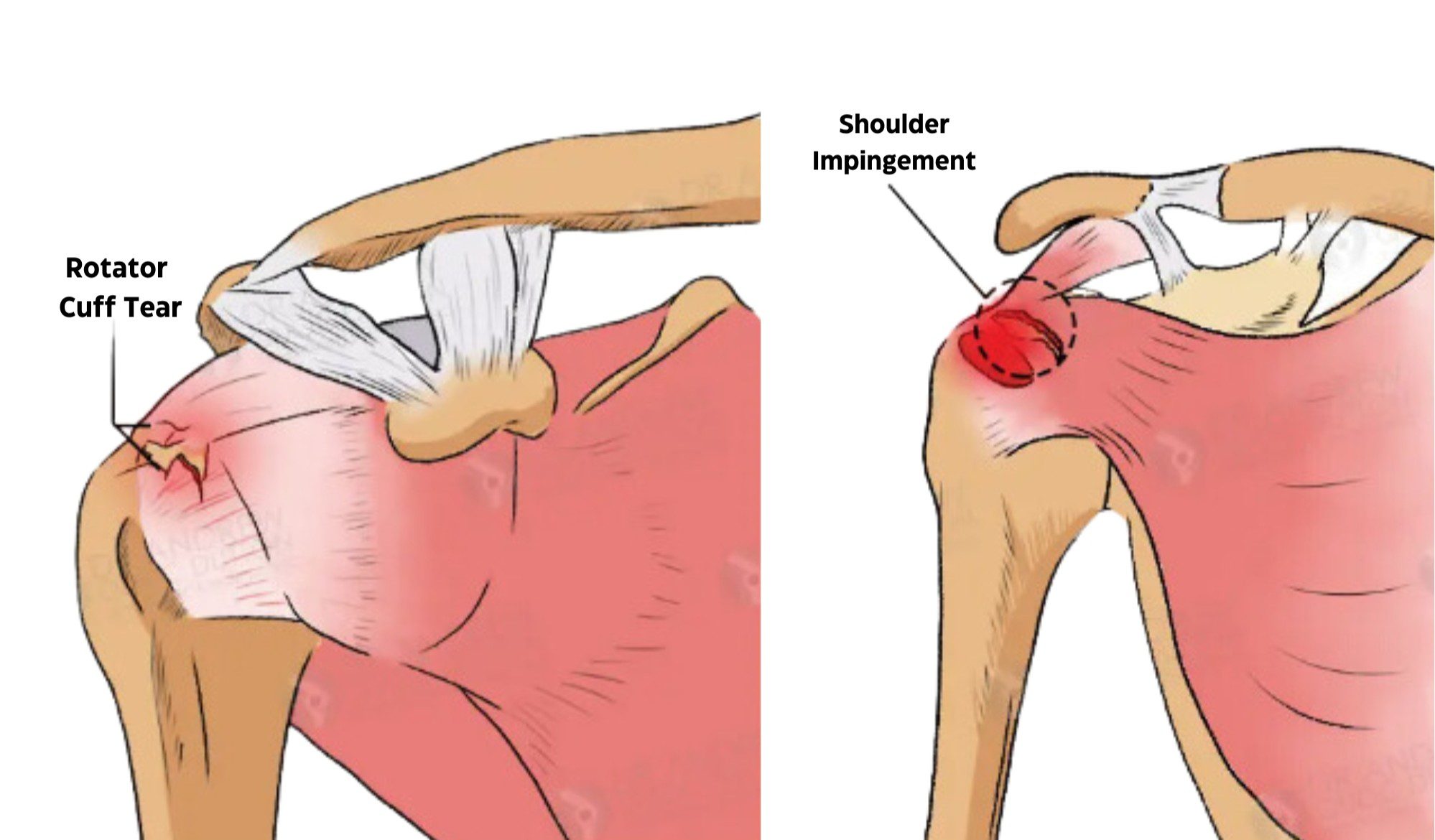Both pathologies involve similar structures and are very close together. However, they are distinctly different conditions, have different onset, and have different treatment protocols.
With respect to rotator cuff injuries, the more often they occur secondary to acute trauma such as a fall, or any blunt force injury. However, impingement syndrome occurs when the tendon component of the rotator cuff becomes pinched or otherwise compromised by the bones of the shoulder (humeral head and the acromion). The symptomology associated with impingement syndrome is often noted with elevating the arm. This pain associated with elevating the arm is a function of irritated and inflamed tendons that attach to the humeral head. This compression or pinching is a long-term degenerative process. Often, the chronic changes to the undersurface of the acromion compromise the normal anatomy and space where the tendons of the rotator cuff (most commonly the supraspinatus) move. The progression of this particular disease process is long-term and progressive, and if the irritation is significant, can lead to a more serious lesion, a rotator cuff tear.
As noted, a rotator cuff tear, if acute, is most often a function of a direct injury. This is noted to be a more serious condition, as the functionality of the shoulder itself is compromised. To be clear, a rotator cuff tear can be a function of age-related degeneration, and this is where the confusion relative to impingement syndrome and an acute rotator cuff tear initiates.
If there is a question related to the diagnoses, particularly causation, a careful clinical history needs to be obtained. If this issue is being discussed, it will be my suggestion that you ask the injured individual the following questions:
- How long has your shoulder been bothering you?
- Is there any known history of arthritis in other parts of your body?
- What specific activities make the pain complaints worse?
- Has there been an acute injury that precipitated the symptoms? If so, what was the exact activity being undertaken, and what were the initial symptoms noted?
- Where exactly are the symptoms noted (as acute rotator cuff tears will be localized to the shoulder, impingement syndrome will generate symptomology to the distal end of the upper extremity)?
- Is there any specific range of motion loss mechanically or is the range of motion loss a function of pain? Hopefully, the clinical examiner will have asked each of these questions. However, if not, you're asking these questions will assist you greatly in the long-term of this injury. A secondary benefit is if the answers to the questions match or do not match.
Hopefully, the clinical examiner will have asked each of these questions. However, if not, you're asking these questions will assist you greatly in the long-term of this injury. A secondary benefit is if the answers to the questions match or do not match.
The findings on physical examination may overlap, and often one cannot determine the difference between these two very distinct clinical states, based on physical examination. This is where it is important to obtain adequate plain radiographs of the shoulder. Plain films can clearly establish a decrease in the space beneath the acromion, the presence of osteoarthritis, the presence of osteophytosis, or other degenerative changes. If these types of lesions are reported, then there is a clear sign that the shoulder pathology is a long-term degenerative process and not related to the identified incident. Additionally, MRI studies will be obtained, and a detailed evaluation of the actual lesion, the presence of degenerative changes, and other markers of acute injury should be readily apparent. If not, then there is a clear competent basis to contest the extent of the compensable injury.
To be clear, these are two very distinct clinical situations. The anatomy involved overlaps, it is the causation, the presence of significant pathology, and the objectification of the acuteness of the injury that needs to be ascertained when dealing with these types of shoulder complaints.

